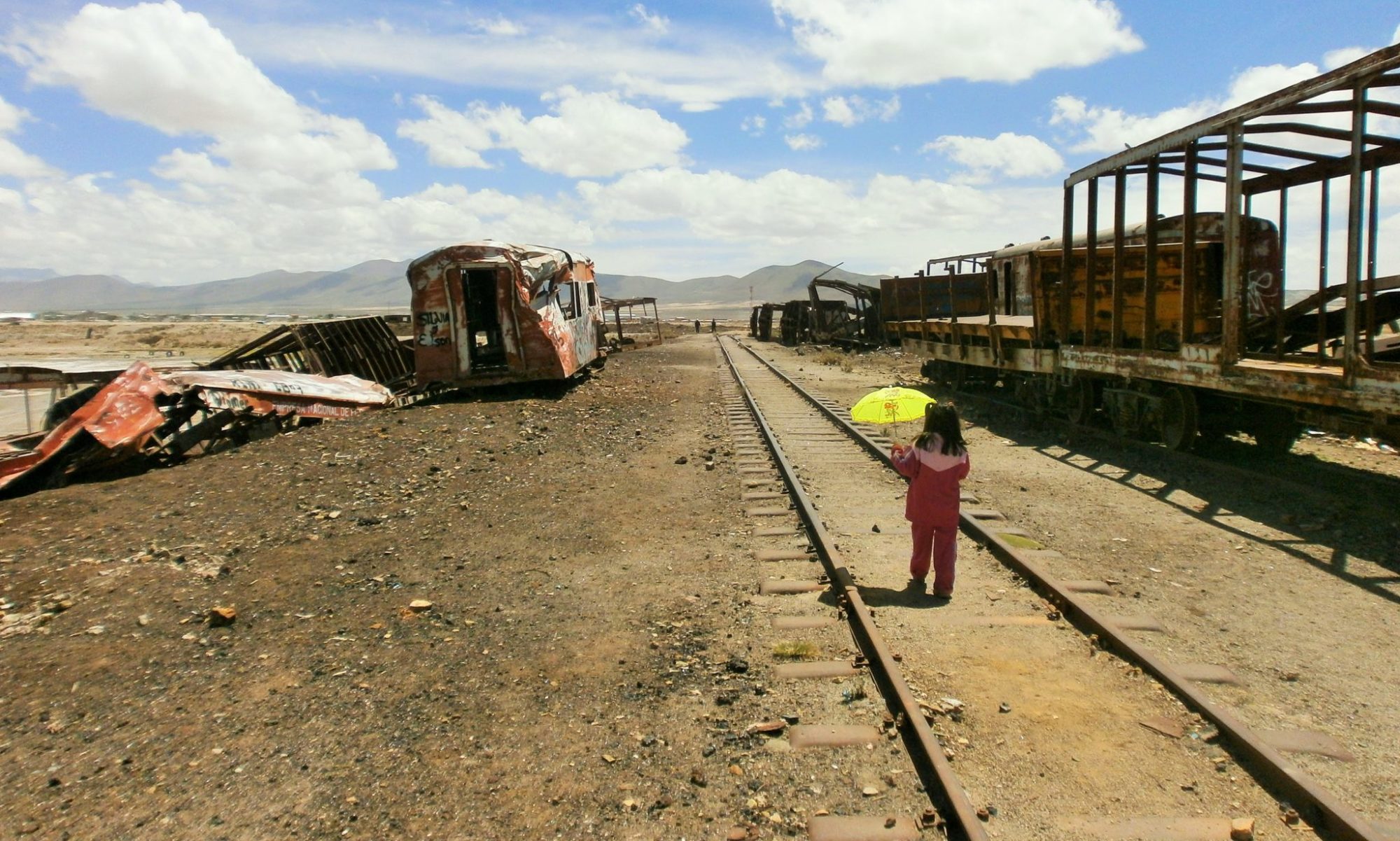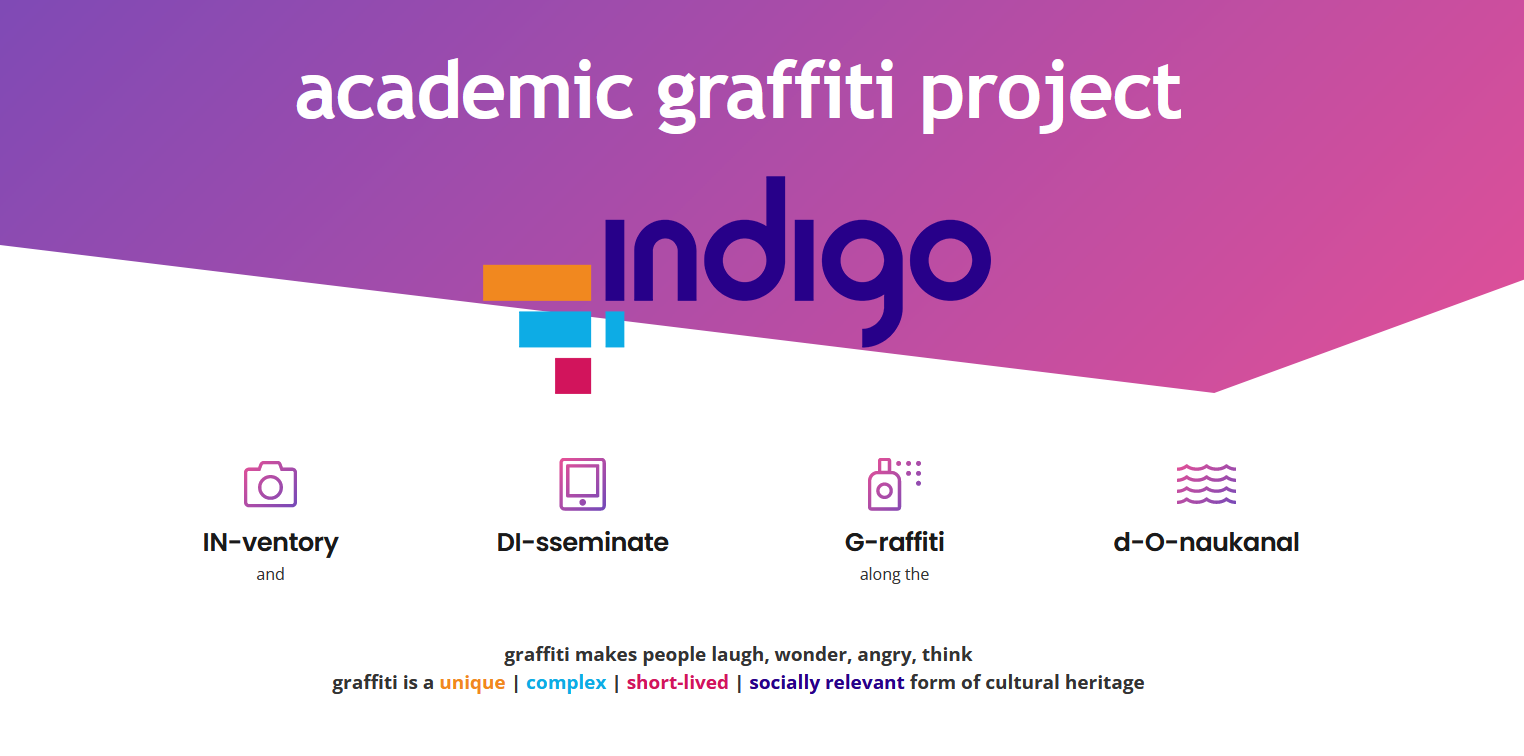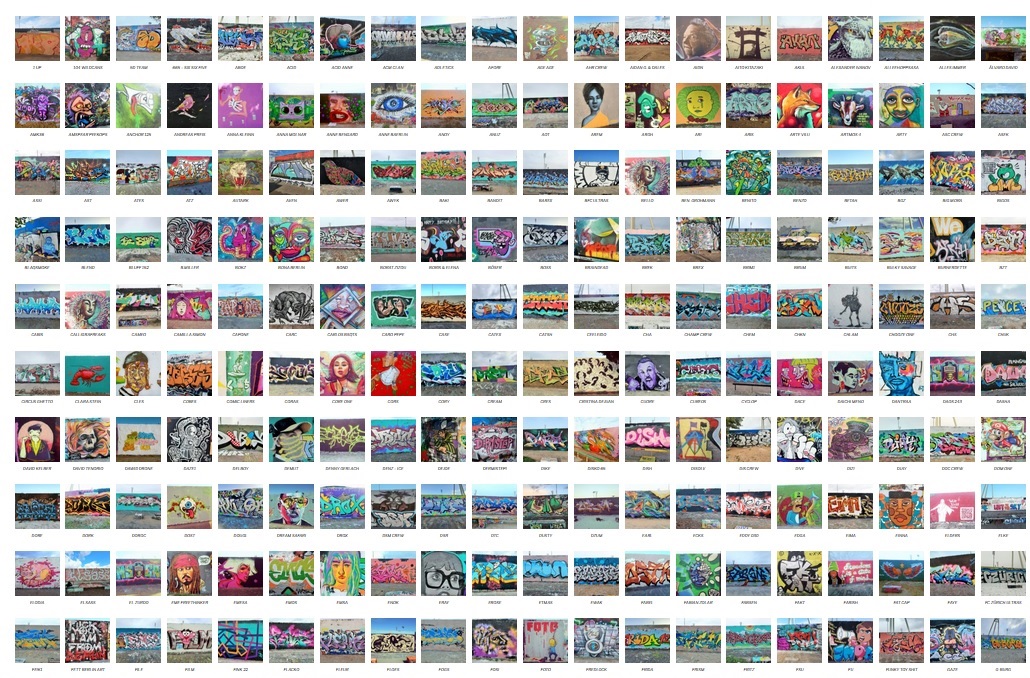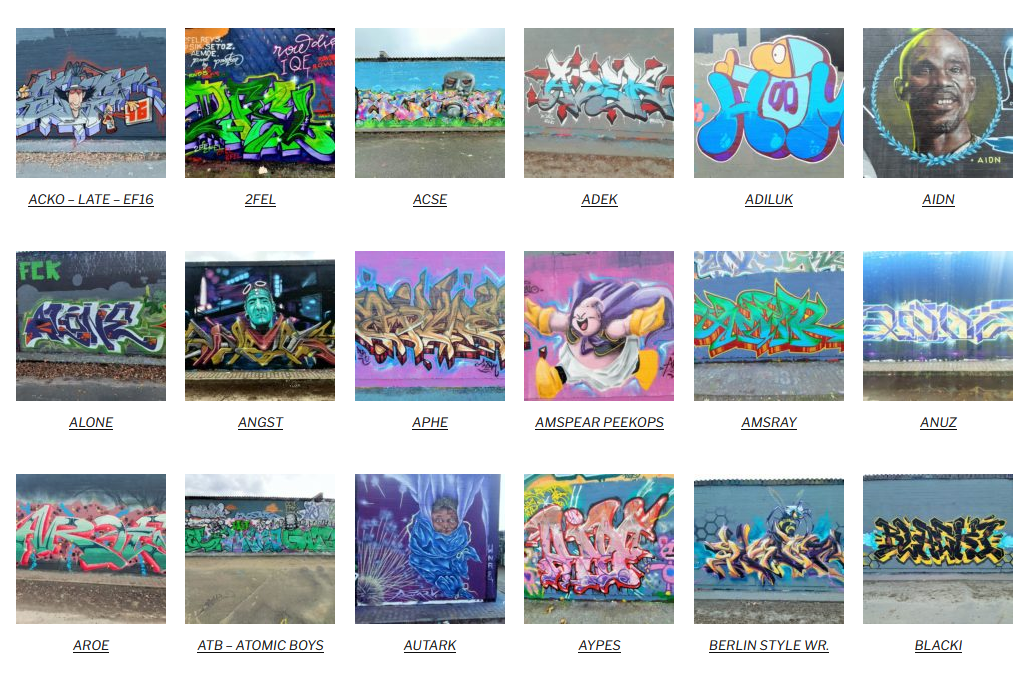From 14th to 16th June 2023 the international graffiti symposium INDIGO took place in Vienna and we were invited to present our Vagabundler project! In the meantime, the videos of the individual presentations are online, including the one of us. In addition, a book will soon be printed with more papers, essays and contributions from the participants, and we will also be part of it. Below there is the video of the presentation, including the contribution for the print edition. A big thank you and respect goes to the organizers of the multi-day conference for processing the material and especially for providing this great platform for lovers of urban art. INDIGO is a graffiti centred academic project funded by the Heritage Science Austria programme of the Austrian Academy of Sciences (ÖAW).

Presentation – The Vagabundler Project
The Vagabundler Project – Urban Art Mapping and Historic Graffiti Documentation
1. Introduction
As a start, a nice comparison by Jurij Paderin from the Graffiti Lobby Berlin, with whom we had an interesting interview for the Vagabundler project: “In Berlin there are thousands of children who like to play football. There are soccer fields for them and new ones are constantly being built. There are thousands of children who love to play basketball. New courts are being built for them. There are many other athletes, there are musicians, actors. Practice places are designed for everyone. But for the children who want to paint on outside walls, there are no places for them. Actually nearly none at all”. That’s a fact, you can read all about it on their website, and the Graffiti Lobby has been working on the legalization of public spaces for artistic activities for many years. Before we go any further, just a quick addition to Jurij’s statement, because that really gets you thinking. Jurij: “What would happen if you took from the children who play football or basketball, the children who play the guitar or the saxophone, the children who do acrobatics or performances, what would happen if you took their places away? If you take away their football fields, the basketball courts, the music schools and all that? What would happen? They would do it anyway! Because they love it and because they just want to do it. The kids would just play soccer in the streets and the basketball players would nail their hoop to a tree and play basketball there. You can’t suppress it. You have to understand it and create space for it.”
At the goINDIGO Graffiti Symposium we presented our “Vagabundler” project. We are not the ones who paint and who create works of art. Nor are we the ones doing politics. But we are the ones who archive, take photos and document. Meanwhile it is well common that it is important to archive, the people understood now especially over time. But we would like to explain to you further steps that you should think about. We live in the communication age, so everything “must” be communicated. From important things to super nonsense. But everything also has to be “proven” if you want to get permission for anything. With documentation and with photos, you can do that very well, especially if you have to prove to municipalities, for example, that a place “is artistically and creatively valuable”. This little text will give you some insights about what we do, how we think and also ideas about what you can do yourself.
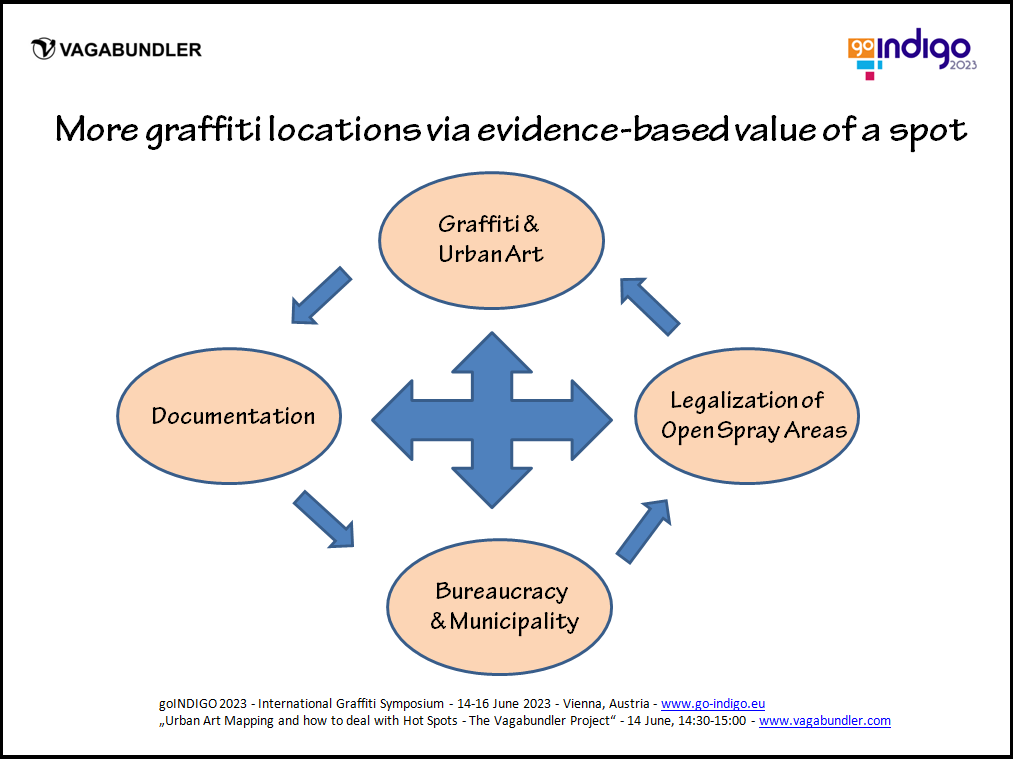
2. Our Mission – Why are we doing this here?
Some explanation about our „Vagabundler Project“ and the people behind. First and foremost, we are lovers of art, colors, diversity and creativity. In addition to the joy of observing, we also enjoy taking photos. And that’s not even enough, we want to show it to others too. But for us, it’s not just about our photos, it’s much more about the motif itself, what’s behind it and also about those who made it. Our online platform is a collaboration of many creative, lovingly people from all around the world, who are passionately involved in this non-profit project. Partly it comes out of our own interest, but we all in the team have a strong additional motivation and a will to make urban art and everything that it defines and entails better known and to provide information about it. In addition to the photo galleries, we try to let the artists and makers have their own say in interviews. The Vagabundler collective is a small creativity interested family which informs, documents and archives. Many works of art in public space are no longer available after a short time, and often there are not even photos of them. Our website offers a database of beautiful works from places around the world. Apart from the art perspective, which already is a huge reason why the works have to be documented, it is clearly also a socio-cultural phenomenon. It has to be reported on and we try to mediate, explain and create access and maybe even connections. Urban art and art in general is a form of human expression in our society. There is great value in it and there are many messages included. We try our best to show you this fantastic colorful world and the creators behind, to explain it and to bring it closer to you on vagabundler.com.
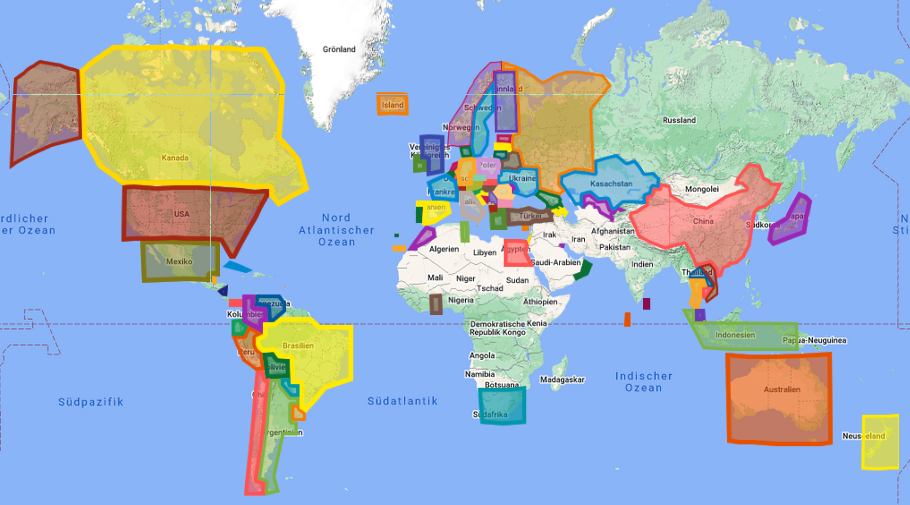
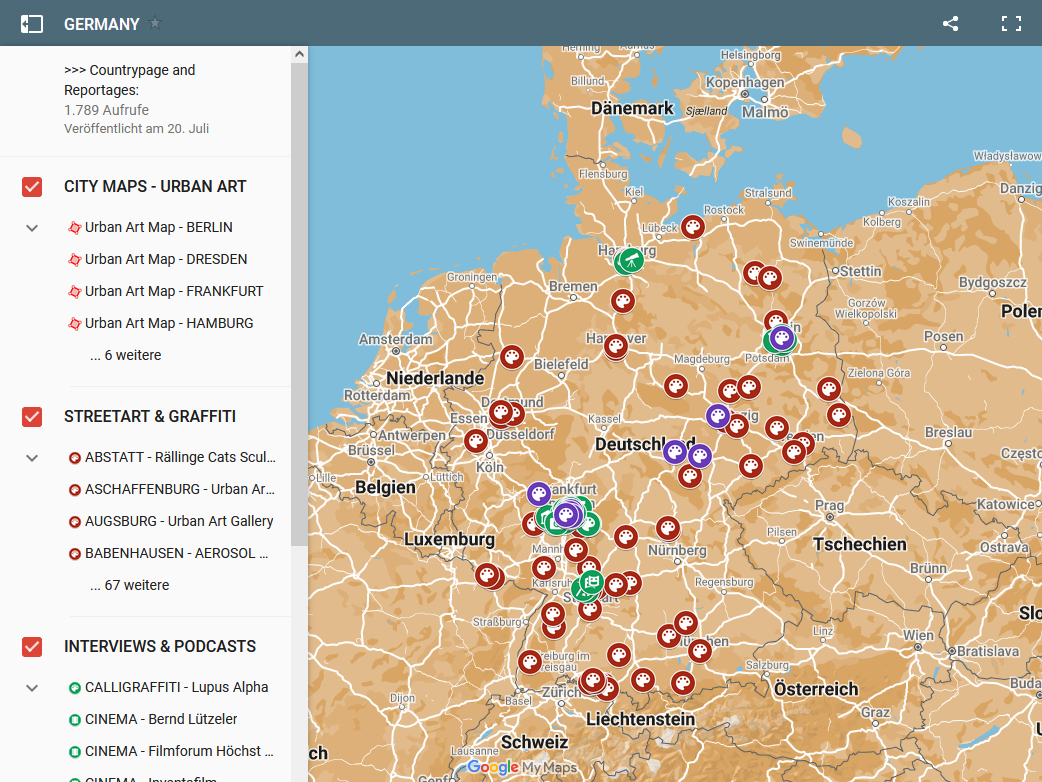
3. How do the maps work?
The posts, photos and interviews on the Vagabundler website are linked to maps, you basically navigate first using the maps. There is a world map and then maps for each country. Actually there are several world maps, such as one with all interviews or one with all participants so far. There are city maps to the places from which we have a particularly large amount of material and where crew members also regularly contribute new photos, you could call them city ambassadors. That would then be the next “zooming in stage”, on each map there are markers who lead to further levels or to individual pages with spot reports, interviews or extensive articles. The idea of locating urban artworks on online maps is not new, there are already many such maps, however most of the maps have the markers attached to the respective artworks. At Vagabundler, the marker isn’t the identifier of the artwork, but of the spot itself. This means that if new artworks are created at that exact location, then future photos will be added to that belonging page. In this way, pages have already been created that show the history of a single wall with countless works of art over several years. So we can also go back in time in our documentation and add to the database content from today but also from the past. Likewise, everyone is invited to participate to this open source project.
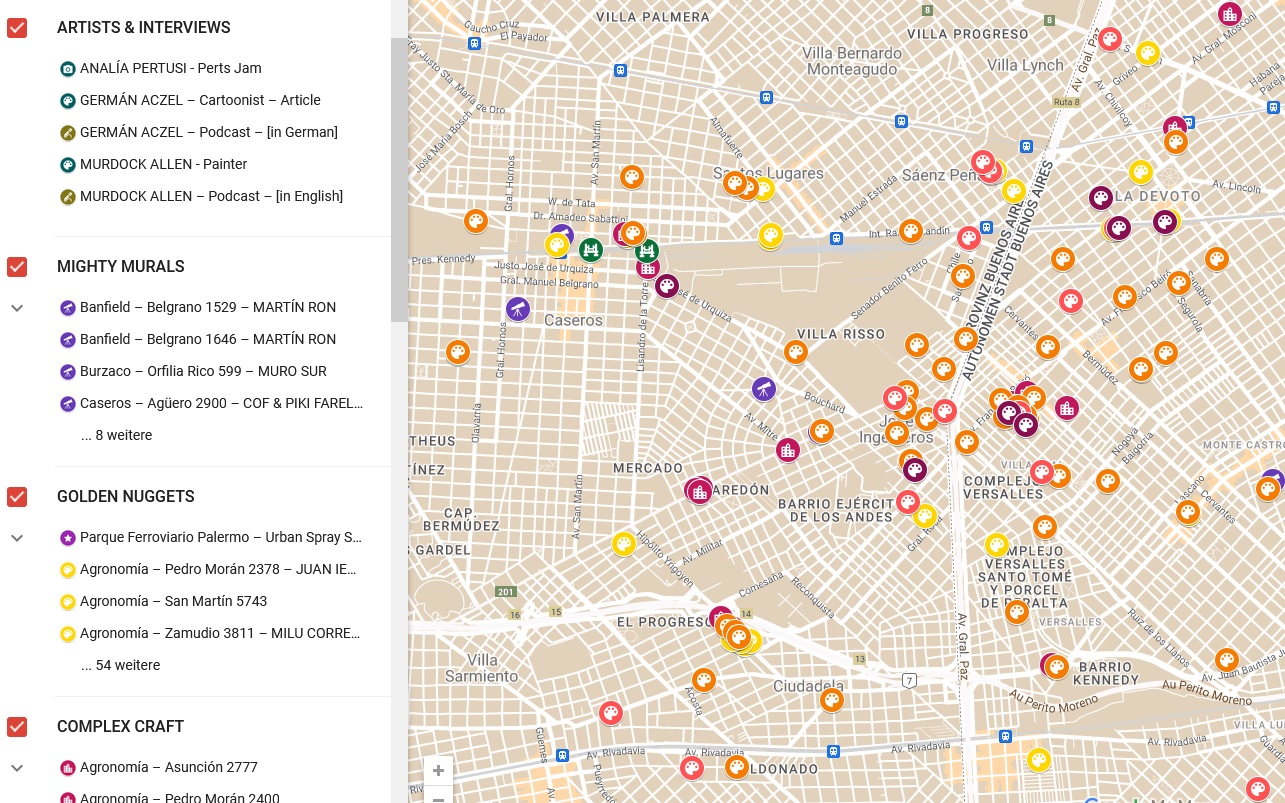
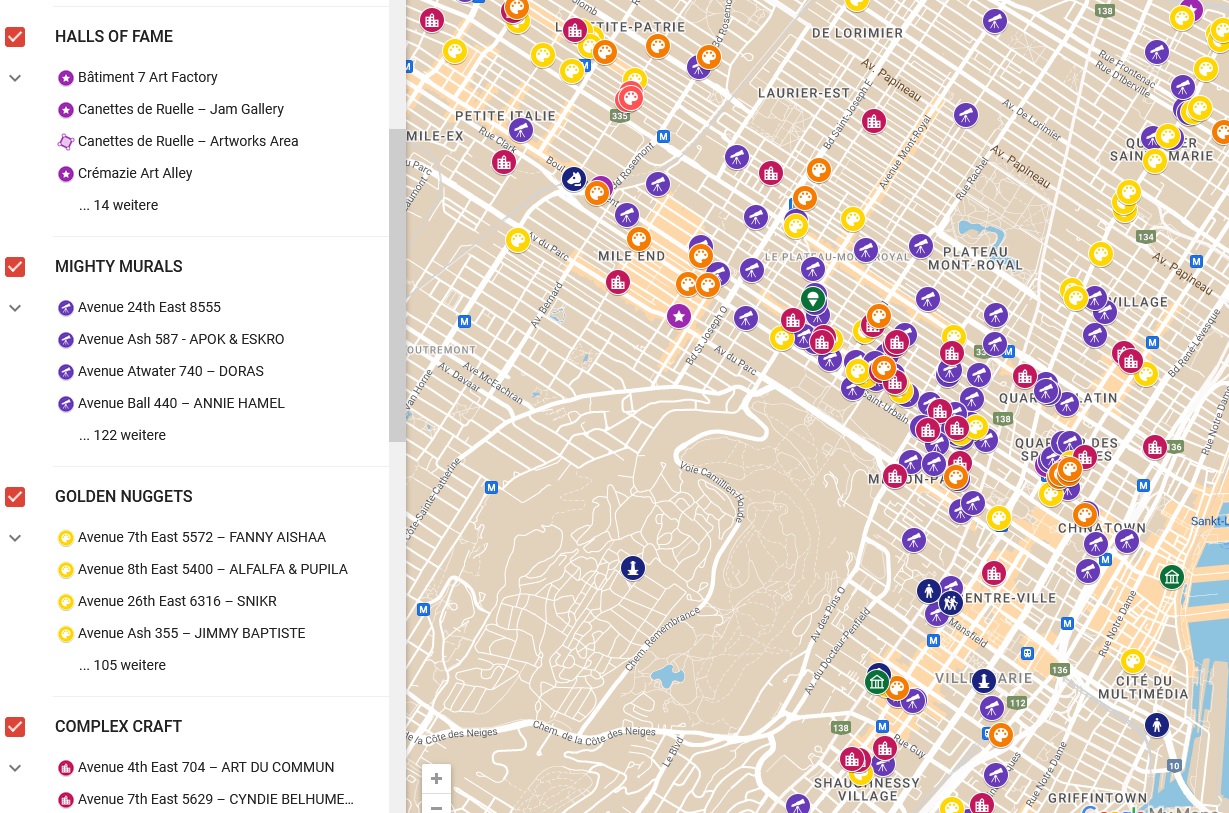
All the buttons on each of the city maps are links to a photo gallery of the spot, sometimes with only one photo, sometimes with heaps of photos or even a full report. The different symbols explain various categories of the streetart, urban creations and graffiti artworks. In the navigation of the map on the left you can find the several markers sorted by the categories and it´s possible to hide or fade these layers. With the map application it is possible to include 10 categories. The many different maps on the website have evolved according to the contributing collective members, so there are different categories on the maps depending on the focus of the photographer or which art forms are often represented in that city. For example, a brand new category is „Temporary Diamonds“, which was recently created for artworks on temporary wooden construction fences on the map of Gothenburg, Sweden.
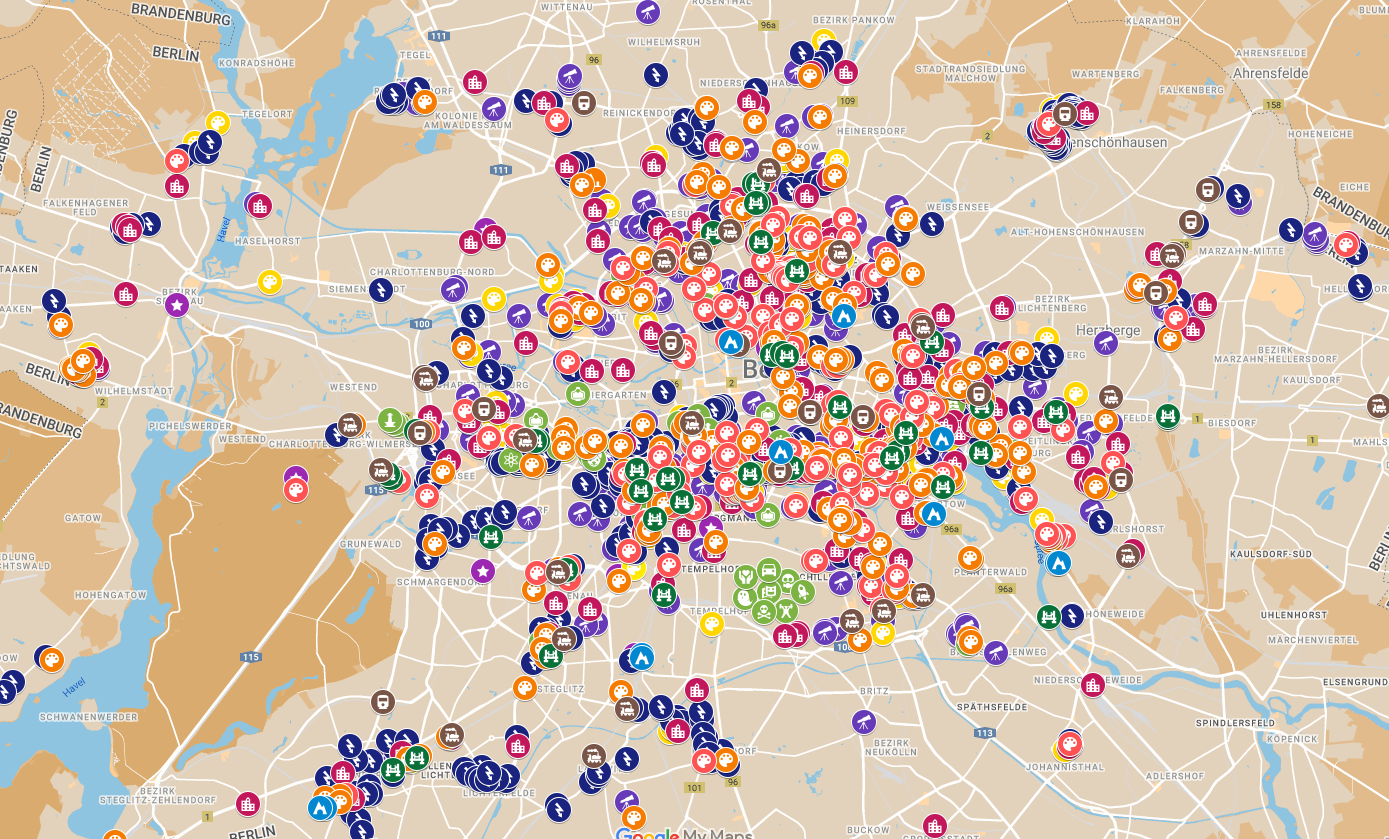
4. How to deal with Hot Spots and Halls of Fame?
But how to proceed with the big hot spots, the Halls of Fame and the places where simply huge amounts of new works are created every day? One motivating reason for the development of the presentation with those maps was the way the content is handled on most of the usual social media platforms. A picture or a post is always placed on top of the previous one, after a certain time the posts just disappears in the feed, gets forgotten and hardly anyone scrolls back years. Although the photos are great and the works were or still are fantastic, the photos are swallowed up and buried by every new posting. A representation on a map definitely opens up an additional dimension and offers an equal representation of all the spots. But if we would line up all the artworks from, for example, Mauerpark in Berlin on one single page, which is one of the biggest spray spots in Berlin, then we would have the same unwanted effect as on Instagram or Facebook. It would be an eternally long page and a jumble of information. That’s why the hot spot pages are each subdivided into a further level and there is a separate sub-page for each artist in alphabetical order. This means that these sub-pages present the history and also the development of a single artist at exactly this spot.
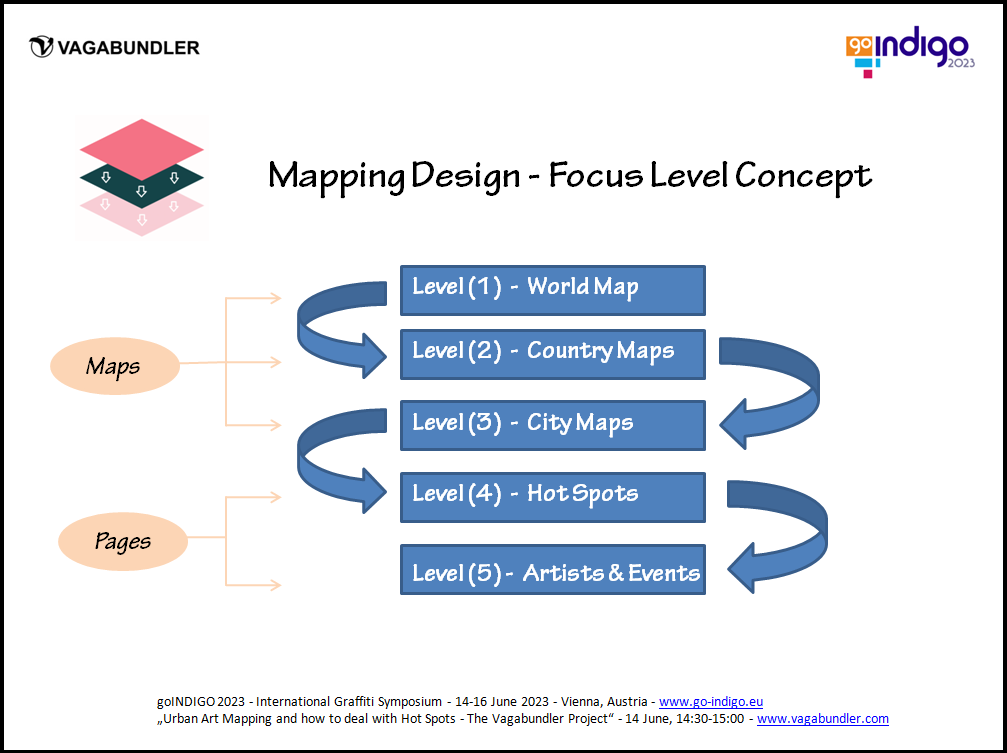
5. Development in difficult times – Or development because of difficult time?
We also want to show you this here, which explains the situation quite good. It’s a Facebook posting from 26th July 2021 during the pandemic times: „A few words about the Vagabundler project and all the interesting things that have happened in the meantime. Over 1000 articles, 70 country maps, 38 city maps, 7700 individual pages and far more than 100,000 photos later. I am overwhelmed, excited and also very proud of our creative and international team! Thank you to everyone involved in this project! Despite the many unceasing negative events in the world, something very beautiful has also emerged here. Last year in March I was in Ireland with Frank Hofmann when all this shit with Corona started. With him, the expansion of the project began, so to speak, Frank now populates the Hamburg Map (currently over 1000 spots) and writes extensive articles. We still had great encounters in Dublin with the graffiti artists Kevin Bohan and Pens on site while a spray session in Ireland, but then I had to break everything off in a hurry and almost panicked back in time before the borders were closed. For the next few months, there shouldn’t be any travel-like plans possible, or rather you couldn’t actually even leave the house for just a very long time.
Well, then I just started to be creative and got busy with other ideas whch you could do from home. It would have happened sooner or later anyway that this “Vagabundler Project” would grow into a bigger network because it was designed and planned that way from the start. The concept was to build up a great magazine, an interesting archive, a database, a smorgasbord of entertaining stories. For those who are just interested in those things. And made by people who are also passionate about it. But with a special focus on street art and graffiti. I started with some first puzzle pieces, but then more stones came from other people. And step by step it beautifully evolved. With all these lockdown stories around the world, we started communicating in other ways. Traveling or seeing each other was not possible, but you could still work on ideas via internet communication and implement projects and creative things together. Vagabundler, initially a small blog by an individual, has now become a collective, a team, a group, a small family that works together on something with a lot of passion. In addition, many people contribute with individual photos or writings.
That’s very nice and I’m really very happy to see how this project and this idea is growing and thriving. Despite the current situation, which doesn’t seem to be stopping, there are also many positive things. I don’t want to say that a team wouldn’t have formed around this platform even without Corona, but it turned out very differently than expected. It has even intensified many things. And in a good way, with even more deliberation. Despite lockdowns and social distancing, we were able to create things together and thanks to the internet, we weren’t that far from each other anymore. I would like to introduce you to the individual people here, check them out if you are interested. And if it doesn’t interest you, then watch it anyway, maybe you’ll suddenly discover things that are suddenly interesting after all. Well over 100,000 photos from more than 70 countries are online on more than 10.000 individual pages and more than 100 maps. Countless extensive to short articles, reports, interviews, audio podcasts or videos are included. With a lot of research work on background information and links to the artists and cultural workers. Sometimes just photo galleries, sometimes very detailed reports or even just an amusing story. Some team members already have profile pages, some send photos for posts, others write extensive articles and others build entire graffiti maps to a city with lots of background information about the creators of the works. We try to support the art and culture scene, especially the artists and creators of the works, also the organizers of events and owners of art spaces. We do that by providing information, presenting works, explaining the background and showing how cool it is. Most of all we want to show, that creativity is everywhere, all over the world, in each of us. We humans can do both. We can destroy and we can create. With Vagabundler we definitely promote creativity and want to motivate everyone to be creative themselves, as well we try to support the ones who already are.“
6. Some short facts about Vagabundler
>>> Origin: Website www.vagabundler.com online since August 2017
>>> Archive: Meanwhile 150.000 photos online on around 15.000 pages
>>> 134 maps (4 world maps, 83 country maps, 47 city maps, 2 spot maps)
>>> Collective: Around 16 crew members in core group and 100+ contributors
>>> Content: >170 artist profiles & interviews, >300 podcasts included, >500 reports (90% art-related)
>>> Vagabundler is non-commercial and non-profit, we do this because we love it
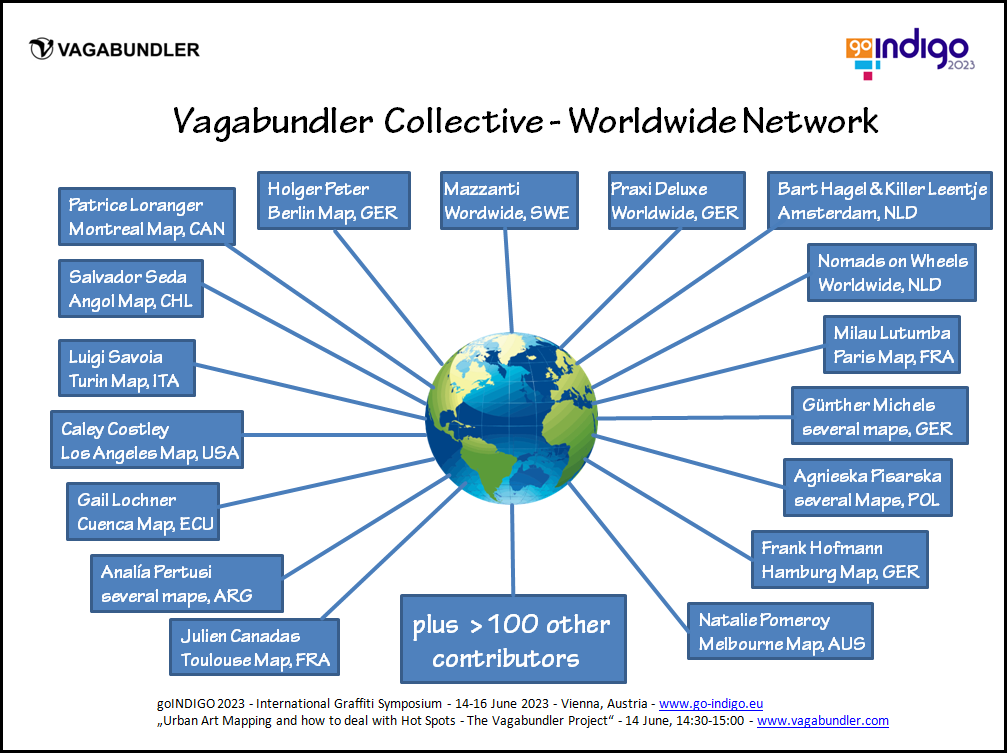
7. The Legalisation of the North Side Gallery
Back to here and now. But a little explanation and a review is good to understand how it all started and shows transparency about what we are doing. Of course, there have been many other developments as we look ahead and towards the future. Because even if we are more the journalistic documenters, we still have a strong supportive intention for the scene. We are in favor of there being more space for graffiti and creative design everywhere around the world. And by working together with other actors, you can initiate such plans, set them in motion and implement them. An example of this is the story about the “North Side Gallery” in Berlin. An incredibly big respect and super thank you goes to the Graffiti Lobby Berlin, which does never give up and has stayed with their cause over many years with full passion. They deal with the politicians, they discuss and argue. Until there is more freedom for creativity. Not everyone likes these kinds of bureaucratic discussions and political arguments, not everyone can do it. Any documentary material helps of course and can provide argumentative support, because it shows evident, verifiable proof of the “artistic value” of a place.
The Graffiti Lobby Berlin had been discussing with the municipalities for years about several spots, one of the was the “Park am Nordbahnhof”, so the park at the former northern train station which is now the “North Side Gallery”. Finally the area was accepted as a spray place, but there was initially a two-year test phase to observe what was happening there and how everything was developing. It should also be checked if it works and if the place even get used. So yes, very yes! It has been and is being used super a lot! And we tried to document as much as possible! There are thousands of photos from hundreds of artists and several jams. Those municipalities’ offices received extensive folders with prints full of the documented graffiti, sorted chronologically, alphabetically and thematically. It was presented to them as evidence on numerous pages, reports and even videos and the documentary work by Vagabundler, Graffiti Battle TV and Urban Presents, but also by many other actors and supporters has helped and contributed to the fact that the decision has now been granted. Since June 2023, the „North Side Gallery“ in Berlin is an official, legal art space where spraying, painting and any other creative activities are permitted. But like everywhere else: Please take your rubbish with you and help to ensure that the artistic space is preserved for a long time.
The Graffiti Lobby was able to use all these pictures and documentation for their work. So we helped each other by doing in what we are good in. Stacks of pages documented everything that happened and is still happening there. It’s just this bureaucratic chess game and when it’s your turn to move, and you have the needed material, then there are just no more discussions, assumptions or assertions. With verifiable photographs and documentation, there are clear statements and facts. Yes, it takes time, but then suddenly it can be simple. You have to stay tuned and above all you have to work together with other like-minded people.
7. Wem gehört die Stadt? – Who owns the city?
Another very nice metaphor story from Jurij from the Graffiti Lobby: “Little Hans sprays a lot of graffiti in Berlin. He spray paints his name everywhere, his tags are all over town. Still, he is depressed. He comes to the table at noon, his head is sad and he looks dejected. His mother asks him, ‘Hans, what’s the matter, why do you look so sad?’ He then says, ‘Mom, I’m really trying my best. But I just can’t keep up with these other writers. No matter what I do, they are always better and paint even bigger”. His mother tries to say some good words: „But Hans, you did a very cool one here and another cool one there. The people really liked it!“ Hans answered: „Yes Mum, but the next day those other writers made something a lot bigger over it“. Then his mother says: “But Hans, if you go to other places and try it there?” Hans then says: “I really tried everything, they are just much faster with tagging than me and they are everywhere. They put their signature on every corner and much more often than I can manage. I can’t keep up with them.” Then the mother asks: “What are these other writers actually called?”. Hans replies: “Those are such strange names, like ‘Coca Cola’, ‘Apple’ or ‘Nestlé’…
Of course, this story is about ownership and, above all, about the view of ownership rights. Who has what right to what? Who has the right to the water, to the air or to our neighborhoods? What is allowed to own, what is common property? What can you “buy”? This entire text will not provide any answers to these questions, but it is intended to raise and challenge them in the first place. Ask yourself the question and think about it. Who owns the city? The people who live in it or “others” who buy things. It’s not just about the walls for graffiti and free artistic expression. It is about thinking about how you want to live and under what circumstances. Because at least in the countries where there is democracy, we can all have a say. Even if it takes a long time and even if it is complicated, it is possible. But for that we have to work together. The artists, the documenters, the organizers, the fans, the supporters, the advocates, everyone. One family and colourful creativity all over!
INFOTHEK
![]() Graffiti Project: PROJECT INDIGO
Graffiti Project: PROJECT INDIGO
![]() Symposium 2023: https://go-indigo.eu
Symposium 2023: https://go-indigo.eu
![]() Website: https://projectindigo.eu
Website: https://projectindigo.eu
![]() Instagram: https://www.instagram.com/projectindigo.eu
Instagram: https://www.instagram.com/projectindigo.eu
![]() Twitter: https://twitter.com/projectINDIGOeu
Twitter: https://twitter.com/projectINDIGOeu
![]() Youtube: https://www.youtube.com/@projectINDIGOeu
Youtube: https://www.youtube.com/@projectINDIGOeu
![]() North Side Gallery – East Part: https://vagabundler.com/germany/streetart-map-berlin/north-side-gallery-east
North Side Gallery – East Part: https://vagabundler.com/germany/streetart-map-berlin/north-side-gallery-east
![]() North Side Gallery – West Part: https://vagabundler.com/germany/streetart-map-berlin/north-side-gallery-west
North Side Gallery – West Part: https://vagabundler.com/germany/streetart-map-berlin/north-side-gallery-west
![]() Graffiti Association: GRAFFITI LOBBY BERLIN
Graffiti Association: GRAFFITI LOBBY BERLIN
![]() Website: https://www.graffiti-lobby-berlin.de
Website: https://www.graffiti-lobby-berlin.de
![]() Facebook: https://www.facebook.com/graffitilobbyberlin
Facebook: https://www.facebook.com/graffitilobbyberlin
![]() Instagram: https://www.instagram.com/graffitilobbyberlin
Instagram: https://www.instagram.com/graffitilobbyberlin
![]() Interview: https://hearthis.at/radio-x-interviews/graffiti-lobby-berlin
Interview: https://hearthis.at/radio-x-interviews/graffiti-lobby-berlin
![]() Graffiti Channel: GRAFFITI BATTLE TV
Graffiti Channel: GRAFFITI BATTLE TV
![]() Facebook: https://www.facebook.com/graffitibattle.tv
Facebook: https://www.facebook.com/graffitibattle.tv
![]() Instagram: https://www.instagram.com/graffitibattle.tv
Instagram: https://www.instagram.com/graffitibattle.tv
![]() Twitch: https://www.twitch.tv/graffitibattle
Twitch: https://www.twitch.tv/graffitibattle
![]() VKontakte: https://vk.com/graffitibattletv
VKontakte: https://vk.com/graffitibattletv
![]() Telegram: https://t.me/graffitibattletv
Telegram: https://t.me/graffitibattletv
![]() Youtube: https://www.youtube.com/@GraffitiBattle
Youtube: https://www.youtube.com/@GraffitiBattle
![]() Urban Art Blog: URBANPRESENTS
Urban Art Blog: URBANPRESENTS
![]() Website: https://www.urbanpresents.net
Website: https://www.urbanpresents.net
![]() Facebook: https://www.facebook.com/urbanpresents.net
Facebook: https://www.facebook.com/urbanpresents.net
![]() Instagram: https://www.instagram.com/urbanpresents
Instagram: https://www.instagram.com/urbanpresents
![]() Twitter: https://twitter.com/urbanpresents
Twitter: https://twitter.com/urbanpresents
![]() Flickr: https://flickr.com/photos/kersavond
Flickr: https://flickr.com/photos/kersavond
![]() Pinterest: https://www.pinterest.de/urbanpresents
Pinterest: https://www.pinterest.de/urbanpresents
![]() Vimeo: https://vimeo.com/urbanpresents
Vimeo: https://vimeo.com/urbanpresents
![]() Youtube: https://www.youtube.com/@urbanpresents
Youtube: https://www.youtube.com/@urbanpresents
